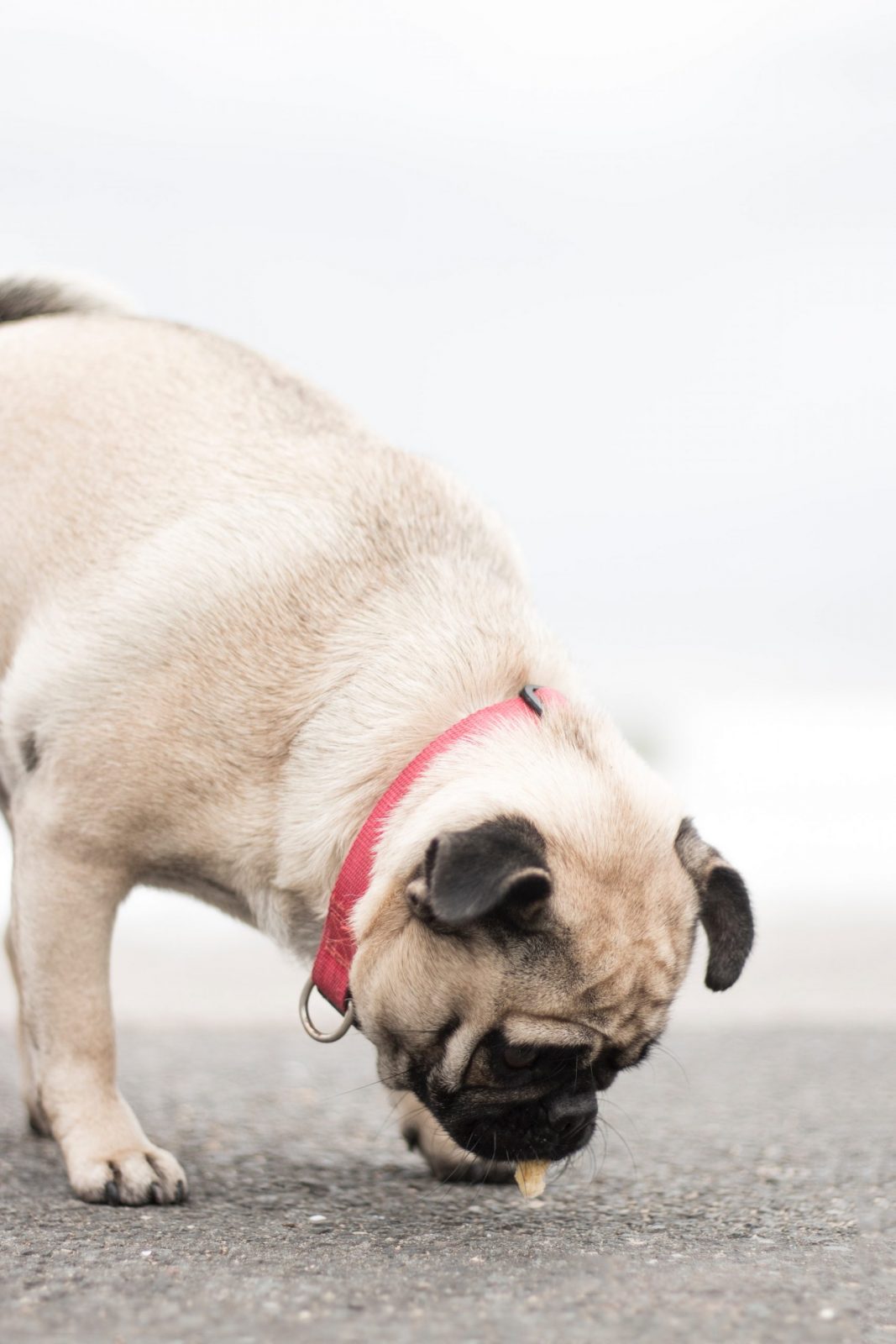
2200 Words; 7 Minute Read: In this new article with tips and tricks for assembling your own first aid kits for small dogs, we:
-
talk about our own home emergency that inspired this post,
-
gather the best advice for assembling your own canine AND human first aid kit, and
-
provide quick resources for refreshing yourself on emergencies you’re likely to face.
Please note, we are Amazon associates and may earn a small commission, at no cost to you, if you purchase through our links. If you do, thank you so much. These earnings help support our work to make life better (and easier) for small dogs and their people!
If You’re In a Hurry
You can just hop on The Small Dog Rules Amazon Store, where we’ve gathered all the goods in one spot. But we hope you read the article.
It contains important information about first aid kits for small dogs. You’ll want to read it before throwing things in your own kit.
And now, back to our regularly scheduled program. (If you’re under fifty years old, you probably have no idea what that means…my apologies. Go ask your elders.)

The Failed Emergency Response
A little over a month ago, we hosted a large family celebration. About halfway through the evening, one of the guests, a healthy man in his early 30s, suddenly began complaining of a rash and itching sensation in his throat. Although “Joe” had no history of allergies, we’d served seafood and we weren’t taking any chances.
I ran upstairs to grab the brand new commercial first aid kit I’d purchased several months prior.
I knew there had to be Benadryl in it. I mean, what self-respecting first aid kit wouldn’t include this staple emergency medication?
Um.
Ours.
Not surprisingly, Joe’s fiancé had rushed upstairs with me. We both stared in disbelief at the array of unusable stuff spread over the guest bed, where I’d strewn everything in my desperate attempt to find the antihistamine.
If Joe had needed forty miniature packs of Vaseline, a needle and thread, or gauze, we’d have had him covered. Of course, by “covered,” I don’t mean securely, since the gauze didn’t even come with gauze tape. Unfortunately, he would have unraveled quickly.
Fortunately, however, and with no thanks to my commercial first aid kit, another guest’s emergency Epi Pen served to cover us. We forced Joe off to the hospital, kicking and screaming as most men in their 30s tend to do when ordered to consult a physician.

Two Lessons Surrounding Commercial First Aid Kits for Small Dogs
I’ve since learned that Benadryl isn’t terribly effective for potential anaphylactic shock. So, it didn’t really matter that we didn’t have the antihistamine.
That’s lesson one.
Lesson two? Don’t rely on commercial first aid kits, most of which are apparently designed to look complete while costing as little as possible to assemble.
Frankly, I don’t blame the companies, as I discovered it’s expensive to create your own first aid kit for small dogs. However, because you can make half a dozen kits from the supplies you purchase in bulk and divide them among your home, your car, and your family, making your own kits is a wonderful way to be sure everyone is safe.
Understanding the Importance of First Aid Kits for Small Dogs

As pet parents, the safety and well-being of everyone in our family is, of course, a top priority. Accidents and emergencies can and do happen.
Having a DIY first aid kit on hand can make all the difference in getting our small dogs the care they need until we can get them to the vet.
Here, we’ll explore the importance of having a DIY first aid kit for your small dog and what should be included.
The Benefits of a DIY First Aid Kit for Your Small Dog
Having a well-stocked first aid kit for both humans and pets is essential. It provides peace of mind knowing you’re prepared for minor bumps, bruises, and other injuries. Here are some benefits of having a DIY first aid kit for your small dog (and the rest of your family 😊):
- Faster Response to Emergencies
In an emergency, every second counts. With a DIY first aid kit, we can administer basic first aid until we can get our injured pet to a veterinarian. Therefore, with everything assembled ahead of time, we won’t waste precious minutes searching for supplies.
- Reduce the Risks of Infections and Complications
Our small dogs may suffer from injuries or illnesses that can’t wait until we get to the emergency hospital—they require immediate attention. By having a first aid kit on hand, we can clean and dress wounds, prevent infections, and administer anti-inflammatory or pain medications as needed. This can help to reduce the risks of complications and promote faster healing.
- Save Money on Veterinary Costs
We all know emergency veterinary services are costly. However, a quick response with a first aid kit can prevent surface injuries from escalating into more severe issues. Being able to provide basic first aid can ultimately save money on veterinary bills, especially if the injury is minor and doesn’t require professional medical attention.

How to Assemble, Stock, and Organize Your DIY First Aid Kits for Small Dogs
While our small dogs are practically perfect, they can be more prone to accidents and injuries. Thus, having the right supplies on hand can make a significant difference in their recovery.
Here are some essential items to include in your small dog’s first aid kit, organized by emergency:
Choose a Container or Bag
- a Ziplock bag (inexpensive, and its see-through nature makes it easy to find things quickly)
- a toolbox
- or tackle box or an actual first aid box
While the first aid box is cute, we’re ordering the tackle box. Admittedly, I love the way the trays fan open, making everything easy to see.

Wound Care for First Aid Kits for Small Dogs
Disposable gloves: Disposable gloves in a pet first aid kit keep wounds free from bacteria while also protecting us from possible infection.
Trauma Scissors: Use these for cutting bandages or quickly removing harnesses or collars without causing pain.
Gauze strips: Gauze strips are crucial to include in your dog’s first aid kit. These materials do triple duty, helping not only with cleaning and covering wounds, but also working as a makeshift tourniquet or muzzle.
Yes, muzzle. Severely injured dogs will lash out just like toddlers when they’re hurt and don’t understand what’s happening. We like these two-inch wide options for small dogs, whose legs probably can’t handle the four-inch wide variety.
Adhesive Tape: Don’t be like the commercial kit we purchased. Gauze requires tape. Unless you get the self-sticking kind, which comes in a bunch of great colors 😊.
Hydrogen Peroxide: Hydrogen peroxide is a crucial item to have in your dog’s first aid kit. It can clean wounds and disinfect surfaces.
You’ll note we haven’t included anything like Neosporin here. Because dogs tend to lick at things like that, we thought it best to leave it off. But the next time you’re at your vet, talk to them about the best thing to have on hand. That’s what we’re going to do.

Insect Bites or Stings
Tick Removers: We used to recommend a different tick remover on our Amazon Store, but we’ve noticed that several people have returned them. Ours worked well, so I’m not sure what the issue was, and I have no way to reach out to ask. But we see this type has high ratings and is an Amazon Choice.
Tweezers: We love these specialized first aid tweezers by Tweezerman for removing fine splinters in humans. We’re sure they’d work well to remove stingers.
Antihistamine (Benadryl) – administer only under veterinary guidance.

Eye Irritation
Saline Solution: Saline solution is useful for cleaning out your dog’s eyes, especially if they have any allergies or irritations from debris or dust. As a bonus, this particular solution helps with the tearing so common in our small pups.
Some veterinary websites caution us to use a saline solution that is specifically made for pets; human-grade saline solution may contain preservatives that could harm your dog’s eyes. On the other hand, some experts say that plain saline is fine but we need to avoid contact lens solution or human eye drops.

Sprains and Strains
Cold pack: Reducing swelling quickly can alleviate pain and deter further injury.
Epsom Salt: Epsom salt baths are a natural remedy that can promote overall health and soothe your small dog’s sore muscles and joints. In addition, Epsom salt baths are recommended for treating minor injuries. Just fill a sink or small tub with warm water and follow the package directions. Encourage your pup to soak in the water for roughly ten minutes. Hopefully, you’ll notice a significant improvement in their mobility and comfort.
Caution: Do NOT let your pup drink the water, obviously, and rinse them off thoroughly.
Aspirin for Small Dogs: While you can give baby Aspirin with no sweetener to pups (under veterinary supervision), why not have this formulation on hand. It’s dosed especially for our small dogs.

Stomach or Lethargy Issues
Anti-diarrheal (Pepto-Bismol) – used only under veterinary guidance. Read this great article by PetMD regarding the many reasons you don’t want to be using this, unless your vet has said it’s okay to do so.
Thermometer: A thermometer is another necessary item for your dog’s first aid kit. A high temperature could show that your dog is sick or has an infection. Use a digital thermometer designed for pets, as they are more accurate in reading the dog’s temperature.
Hydrogen Peroxide: (Yes, this is here twice). Hydrogen peroxide can induce vomiting if your dog ingests something dangerous. CAUTION: The ASPCA warns that you should induce vomiting only under guidance of poison control or a veterinarian.

Veterinary Records
Keep all the essential information and documents in your first aid kits for small dogs, including:
- Emergency contact details (veterinarian and animal hospital)
- rabies certificate
- insurance papers
- A copy of your dog’s ID

First Aid Guide for Pets
You can purchase a small guide–this spiral bound Dog First Aid by the American Red Cross is great. And, if you’re on Kindle Unlimited, you can read it for free.
However, if you don’t want to buy a hard copy or crowd your Kindle, we think printing out this handy primer from the American Veterinary Medical Association makes sense. Or at the very least, read through it to refresh your skills.

Maintaining and Updating Your First Aid Kits for Small Dogs: Best Practices
When I went to update our own first aid kit, I decided to check our medicine cabinet as well. I assumed I’d find a few expired items.
Well, I’m embarrassed to reveal over half of what was in there was well beyond its expiration.
So, I put myself on a schedule.
I now use daylight savings day (it’s still a thing where we live) not only to test our fire alarms. On this day, I also throw out and replace stale products in our first aid kids and medicine cabinets.
Of course, you might have a better reminder system. Whatever dates you select, just be sure you’ll remember them. Time gets away from us all.
But, with a little planning, you can be prepared and up to date for whatever life throws you and your pups.

Preparing for Emergencies and Disasters: Essentials for Small Dogs on the Go
With increasingly crazy weather hitting us all, it’s also smart to have a “go bag” on hand not just for our human families but for our pups as well.
With small dogs, especially, we’re much more likely to be allowed into emergency shelters or have plenty of room at a relative’s house. But that doesn’t mean we don’t have to be prepared to leave in a hurry.
That means including an emergency blanket, a freezer bag with a couple of days of food, and several gallons of water available where you can grab it quickly.

Wrapping It Up
Creating emergency first aid kits for small dogs is an essential step in ensuring their health and safety. Preparedness can make a significant difference in caring for them during unexpected emergencies.
By gathering the items mentioned in this article, we’ll all be be well-equipped to handle minor injuries and illnesses, and potentially save your dog’s life until you can reach proper veterinary care.
Remember to store your first aid kit for small dogs in a secure and easily accessible location and check it regularly to ensure it is fully stocked and up-to-date.
We hope this DIY guide to first aid kits for small dogs will be useful. Always seek professional veterinary advice if you have any questions or concerns about your pet’s health.
If you’re interested in more in-depth information about issues concerning small dogs, you’ll want to pick up a copy of Downward Sizing Dog: A Reformed Big Dog Snob Defends the Small Dog Life. You can learn more and read the great reviews on our Discover the Book page.
(This post about small dog first aid kits may contain affiliate links for your shopping convenience and to help support our work. As an Amazon Associate we earn from qualifying purchases. The non-Amazon links are not affiliate, but they’re there because we want you to have quick access to products or information we regardless of whether we earn a commission. Our full disclosure, disclaimer, and copyright notices are found here. )

You’re the Best Guardian
IMPORTANT ADDITIONAL DISCLOSURE
This blog article on first aid kits for small dogs offers generalized information only. You should not assume that recipes, tips or tricks are safe or effective for your particular dog’s needs! Always proceed with great caution when trying new foods or making medical decisions for your pup, especially. You must do your own additional research. Do not rely on this information as a substitute for professional medical advice, diagnosis, or treatment of any health condition or problem affecting your dog.
All questions or concerns you have about your dog’s health should be addressed with your veterinarian, animal nutritionist, or other healthcare provider.
We so hope our writing helps inspire you to help your small dog live a long, happy, and healthy family life. BUT, you need to consult personally with experts in order to make that happen.
You’ll Also Love
Leave a Reply
Your email address will not be published.





